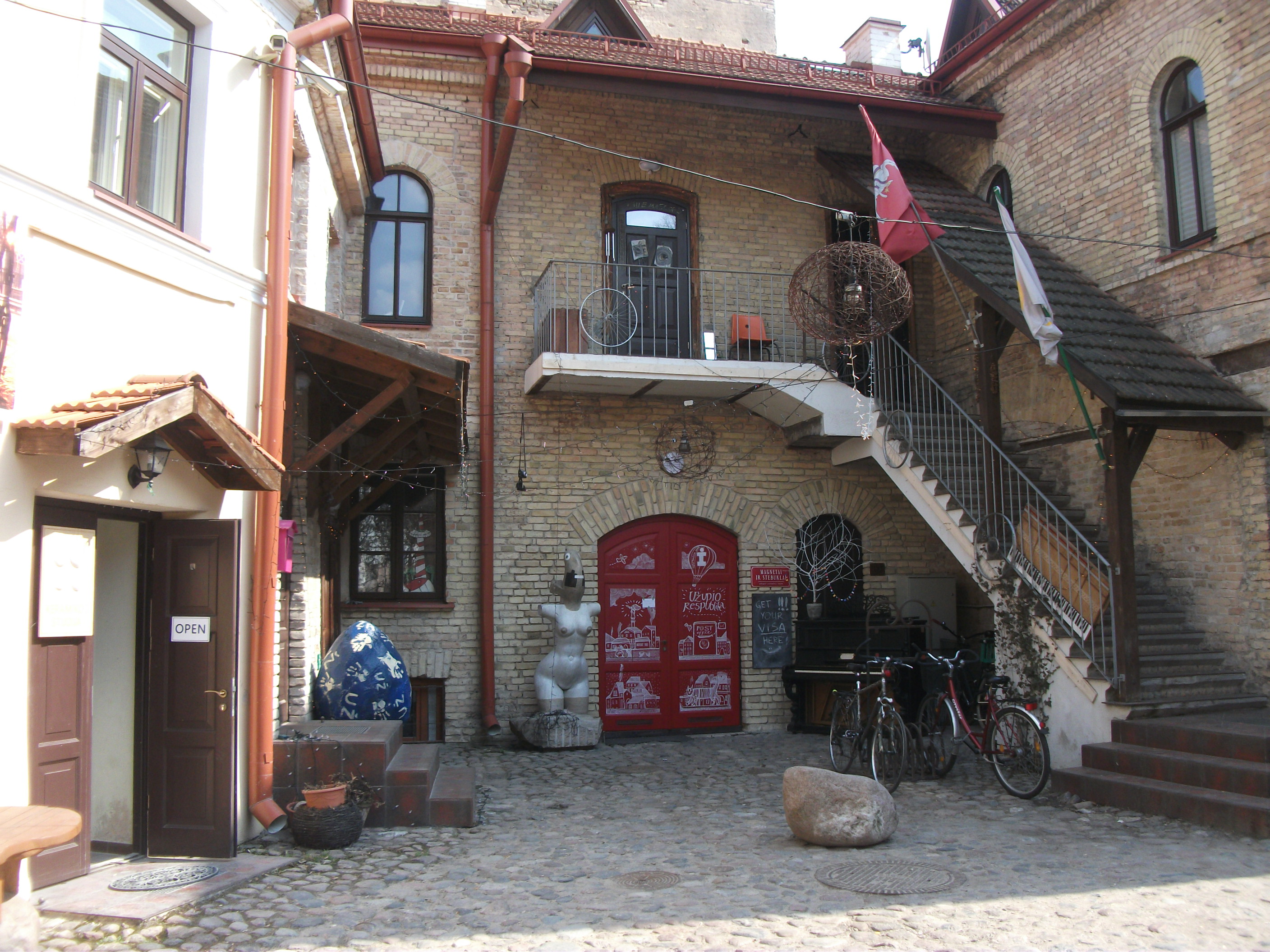
Mindaugas Bridge is constructed in 2003. It has the name of the only Lithuanian King crowned on July 6th, 1253On the foothill on the left riverside of Neris, there is a Renaissance building of Old Arsenal followed by the buildings of House of the Castle Keeper and New Arsenal On the right riverside of Neris, a new business center of Vilnius is growing during the last two decadesAll photos are copyrighted by Vladislav B. Sotirovic© Vladislav B. Sotirovic 2019
Continue Reading

Martynas Mažvydas National Library of Lithuania is a national cultural institution open to all users, active in the areas of dissemination of information, culture, science, and education, performing library activities and ensuring implementation of the national information policy falling within its competence The mission of the library is to be the Lithuanian space of knowledge-creating value for the public The vision of the library: to become an integral part of the state's information policy, culture, education, science, and economic progressAll photos are copyrighted by Vladislav B. Sotirovic© Vladislav B. Sotirovic 2019
Continue Reading
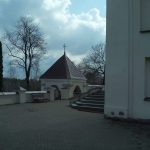
The church and Vilnius Calvary are an expression of gratitude to God for the liberation in 1661 of Lithuania from the Russian EmpireIt is the second oldest and once the most famous Calvary in Lithuania, revered by pilgrims and processions of believersThe late Baroque church was rebuilt in the 18th century. The central nave is decorated with 18th century mural paintings, the sacristy - with 18th century stucco relief worksAll photos are copyrighted by Vladislav B. Sotirovic© Vladislav B. Sotirovic 2021
Continue Reading
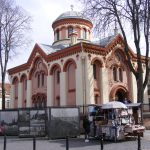
The Russian Orthodox Church of St. Parasceve (or Piatnickaya Church) is located in the centre of Vilnius' Old Town where a Russian Orthodox Church stood since the times of the Lithuanian Grand Duke Algirdas in the mid-14th centurySt. Parasceve Russian Orthodox Church is the oldest surviving Russian Orthodox Church in Lithuania located in the former Russian quarter of the Old TownThe church was reconstructed in the mid-19th century by the famous Russian architect N. ChaginAll photos are copyrighted by Vladislav B. Sotirovic© Vladislav B. Sotirovic 2021
Continue Reading
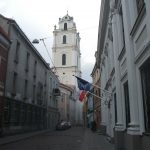
In this street, it was used to be a market place where it meets Pilies street. The first Town Hall is also believed to have stood on this spot Pharmacy house in St. John St. No. 5. Georg Schulz's pharmacy operated in this house since 1639. During the war in 1655, the house was burned down. In 1781, pharmacist Koszyk acquired the ruined building and reconstructed it The Pac estate. Since 1628, the building belonged to the Pac magnate family of the Grand Duchy of Lithuania. In 1783, the dilapidated building was bought, renovated and decorated by the Chancellor of the Grand Duchy of Lithuania - Alexander Michael Sapieha. Currently, the building belongs to the Polish Embassy All photos are copyrighted by Vladislav B. Sotirovic© Vladislav B. Sotirovic 2020
Continue Reading
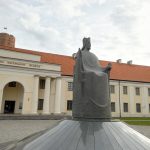
Originally, the Vilnius Lower Castle's jurisdictional court and administration was housed in this building during the 17th and 18th centuries. In the 18th century it was reconstructed into a weapons store-house and militarry baracks. Today, the museum holds the most important archaeological, historical, and ethnic cultural collections of Lithuania that cover Lithuania's history from the Stone Age to the present-day. In front of the building is a monument to King Mindaugas In 2003, a monument to King Mindaugas was erected in the square in front of the building of New Arsenal (today Lithuanian National Museum)In the 19th century, an entrance in the Classical style was biultAll photos are copyrighted by Vladislav B. Sotirovic© Vladislav B. Sotirovic 2018
Continue Reading

After being baptized in 1251 into the Roman Catholicism in 1251, Grand Duke Mindaugas built the first cathedral in Vilnius on the site of the present-day Cathedral Basilica (Cathedral of St. Stanislaus and St. Vladislaus). Before that, in pagan times an altar, a sacred fire or even a Perkūnas sanctuary was located on the site of today's Cathedral Basilica The creation of the Lithuanian state started as late as the 13th century. Its first outstanding ruler Mindaugas was baptized in 1251 and crowned King of Lithuania on July 6th, 1253. Today, July 6th is a national holiday of Lithuanian statehood It is assumed that it was Mindaugas who built the first Cathedral in Vilnius. Traces of the original Cathedral incorporating Romanesque style features have been discovered in the vaults of the present Cathedral. After Mindaugas's death, the Christian (Roman Catholic) Cathedral was turned into a place of pagan worship. The author ...
Continue Reading

The life and work of Dr. Jurgis and Marija Šlapelis reflects the life of the region of Vilnius from the second half of the 19th century to 1940. Both of them have been cultural figures in Lithuania. Marija was actress. They published Lithuanian books that were banned at that timeDr. Jurgis and Marija Šlapelis owned the only Lithuanian language bookstore in Vilnius during 1906-1949. The Šlapelis family bought the house in 1926. Before, it was a goldsmith's workshops, and later housed a small holet called the Hotel de Philadelphie, and a wine shop The building is an example of the 17-th century architecture. Dr. Jurgis died in 1941, and Marija in 1977 at the age of 97. After WWII, the house was nationalised, and, therefore, Marija Šlapelis was forced to live in two small rooms upstairs, with the only access to them through another person's quarters. Marija stipulated in her ...
Continue Reading
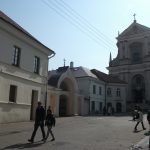
It was built from 1633 to 1654 under the patronage of the Vice-Chancellor of the Grand Duchy of Lithuania, Stephen Pac. Most probably the exterior was designed by Italian Constantino Tencalla. The exterior of the Church of St. Theresa is designed according to the models of Roman architecture: it is noble and harmonious, built along with the vertical principle with volutes and side obelisksThe St. Theresa Church (left) is located at Dawn St. nearby the Gate of Dawn (at the top) that is famous for its miraculous image of the Mother of Mercy (or Mary of Vilnius)The chapel is built by the Barefoot Carmelite monks for the miraculous picture of Mary of Vilnius in 1671. The St. Theresa Church was built with a large Barefoot Carmelite Monastery, established near Vilnius' defensive wall All photos are copyrighted by Vladislav B. Sotirovic© Vladislav B. Sotirovic 2018
Continue Reading
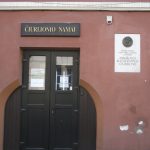
This building in Savičiaus Street in Vilnius Old Town acquired its present appearance in the 18th century with the 19th-century façade. Until the mid-19th century, the building was home to Vilnius governors and burgomasters In 1995, on the artist's 120th anniversary, a memorial culture center and the flat museum was opened in this house. The center and museum, today, hosts lectures on music, art, and philosophy, as well as chamber concertsM. K. Čiurlionis created 350 musical pieces and around 500 artworks. When he lived in this house, he created his most remarkable paintingsAll photos are copyrighted by Vladislav B. Sotirovic© Vladislav B. Sotirovic 2019
Continue Reading
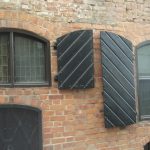
End of Stiklų St. on the intersection with Dominikonų St. and Šv. Ignoto St. in the Old Town in VilniusIn Stiklų St. No. 4 stands a typical building with a so-called Courtyard of the Printing House. Its history goes back to the 15th century. In the 16th century it held the Mamonichi printing house. A Gothic building in the courtyard with the exterior and fragments of the interior was reconstructed in 1974. In front of it a sculpture of "The Chronicler" is erected in 1973Wall (right) of the former Russian Orthodox church in Stiklų St. No. 17All photos are copyrighted by Vladislav B. Sotirovic© Vladislav B. Sotirovic 2020
Continue Reading

One of Baroque gates of the Sapieha ParkAmong the surviving details of the palace are Baroque façades with stucco relief works by Pietro Perti and three Baroque gates. The park is the only one in Vilnius Vilnius with features of a regular Baroque park The palace and the gates were decorated with sculptures and frescoes created by masters who had worked in the Church of St. Peter and St. Paul and St. Casimir's Chapel of the Cathedral Basilica in VilniusAll photos are copyrighted by Vladislav B. Sotirovic© Vladislav B. Sotirovic 2019
Continue Reading
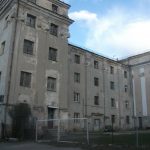
The building was noted for its stately late Baroque appearance. Michelangelo Palloni and Pietro Perti are thought to be the authors of the decorationsNoteworthy is an interesting Baroque pediment with a stucco bas-reliefA courtyard of the estate. Today, the buildings belongs to the Lithuanian Academy of Music and TheatreAll photos are copyrighted by Vladislav B. Sotirovic© Vladislav B. Sotirovic 2020
Continue Reading

The church received its current form in 1738-1749 after fires in the cityThe church was rebuilted by Vilnius Baroque architect J. K. Glaubitz in the ornate Late Baroque style, and installed 24 altars insite The church bell tower received its current shape in 1737. The bell tower is 68 m tall. It is the tallest building in Vilnius Old TownAll photos are copyrighted by Vladislav B. Sotirovic© Vladislav B. Sotirovic 2018
Continue Reading

The Royal Palace at the foot of the Castle Hill was a residence of the Grand Duke of LithuaniaThe Lower Castle is related with the times of Sigismund the Old and Sigismund August, Qween Nona and Barbora Radvilaitė (16th century)In the 16th century the Royal Palace with its Inner Courtyard was an Italian-style palace with four wings and attics. The building around encircled the Inner Courtyard of 2,500 square metres and were connected to the eastern wall of the Cathedral Basilica by a roofed galleryAll photos are copyrighted by Vladislav B. Sotirovic© Vladislav B. Sotirovic 2018
Continue Reading

The Grand Duke of Lithuania Sigismund (1432-1440), who ruled briefly after the death of his brother Vytautas the Great (died in 1430), granted equal rights to the Russian Orthodox believers living in the capital-city of Vilnius - before long they came to constitute one half of the members of the city board and guild elders In the Middle Ages Vilnius (today Old Town) was increasingly multy-national as it was the case with the Grand Duchy of Lithuania as well. The city was, in fact, divided into four quarters according to the ethnic and religious belonging of its citizens: the German Quarter, the Russian Quarter, the Jewish Quarter, and the Tartar Quarter. Each of these city quarters had the main street named according to the ethnic belonging of their inhabitantsThe Russian Street in Old Town of Vilnius ends with the Russian Orthodox Cathedral (Sobor) of the Dormition of the Holy Mother ...
Continue Reading
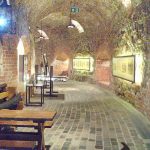
A semi-circular corridor of the Bastion of Vilnius, where cannons were lined up at embrasures, was called a casemate. A special platform with a parapet for heavy artillery was built on the terrace of the bastionA 48-m long, 2,8-m wide and 3,5 m high impressive tunnel leads from the tower to the underground casemate. Cannons brought to the tower would be rolled down this tunnelThe main part of the Bastion of Vilnius is the casemate. It is an underground horseshoe-shaped room for cannons. The casemate forms a semicircle around a 3-4 metre-high hill heightened with sand. From the outside the façade is 8 m high, and sloping, and is built from bricksAll photos are copyrighted by Vladislav B. Sotirovic© Vladislav B. Sotirovic 2020
Continue Reading

Monument to the Gaon of Vilnius Elijah ben Solomon Zalman (1720-1797) called "Jewish Saga". The monument is located on the place where he lived. The house was destroyed during WWII and it was not restored. Nearby the monument there is a memorial plaque in Lithuanian and Hebrew on a building at Žydų (Jewish) Street Antokolski Street in Vilnius Old Town's Jewish Quarter. In this street the famous 19th century sculptor Mark Antokolski lived in 1843-1862. It was here he created his first sculptors depicting the inhabitants of his native quarter, which later gained recognitionMėsinių Street in Vilnius Old Town. That was one of the longest and most important street in the Jewish QuarterAll photos are copyrighted by Vladislav B. Sotirovic© Vladislav B. Sotirovic 2019
Continue Reading

The organ, made by famous German master Adam G. Casparini in 1776, is one of the most valuable cultural monuments of Lithuania. The organ itself is the only surviving original 18th-century instrument in LithuaniaThe church has many Baroque frescoes. In the cupola, there is a multi-figural composition "Apotheosis of the Holy Spirit" (neo-Baroque, 19th century)The altars and the pulpit are lavishly decorated with round and relief sculptures and ornamentation All photos are copyrighted by Vladislav B. Sotirovic© Vladislav B. Sotirovic 2018
Continue Reading
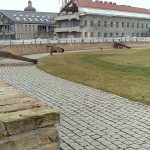
The architect of the Vilnius Bastion is unknown. The building that rose in the early 17th century is attributed to the period of late Renaissance and in that period Vilnius did not have a municipal architectThe wars of the mid-17th century and the 18th century weakened the military power of the Grand Duchy of Lithuania. The army led by the Russian Emperor Aleksey Mikhailovich approached Vilnius in August 1655 and seized the cityWhen Vilnius was liberated in 1660, the city's defensive fortifications needed repair. However, there was not enough funds and the citizens were unable to maintain defensive fortifications, supply them with arms and gunpowder and provide securityAll photos are copyrighted by Vladislav B. Sotirovic© Vladislav B. Sotirovic 2020
Continue Reading
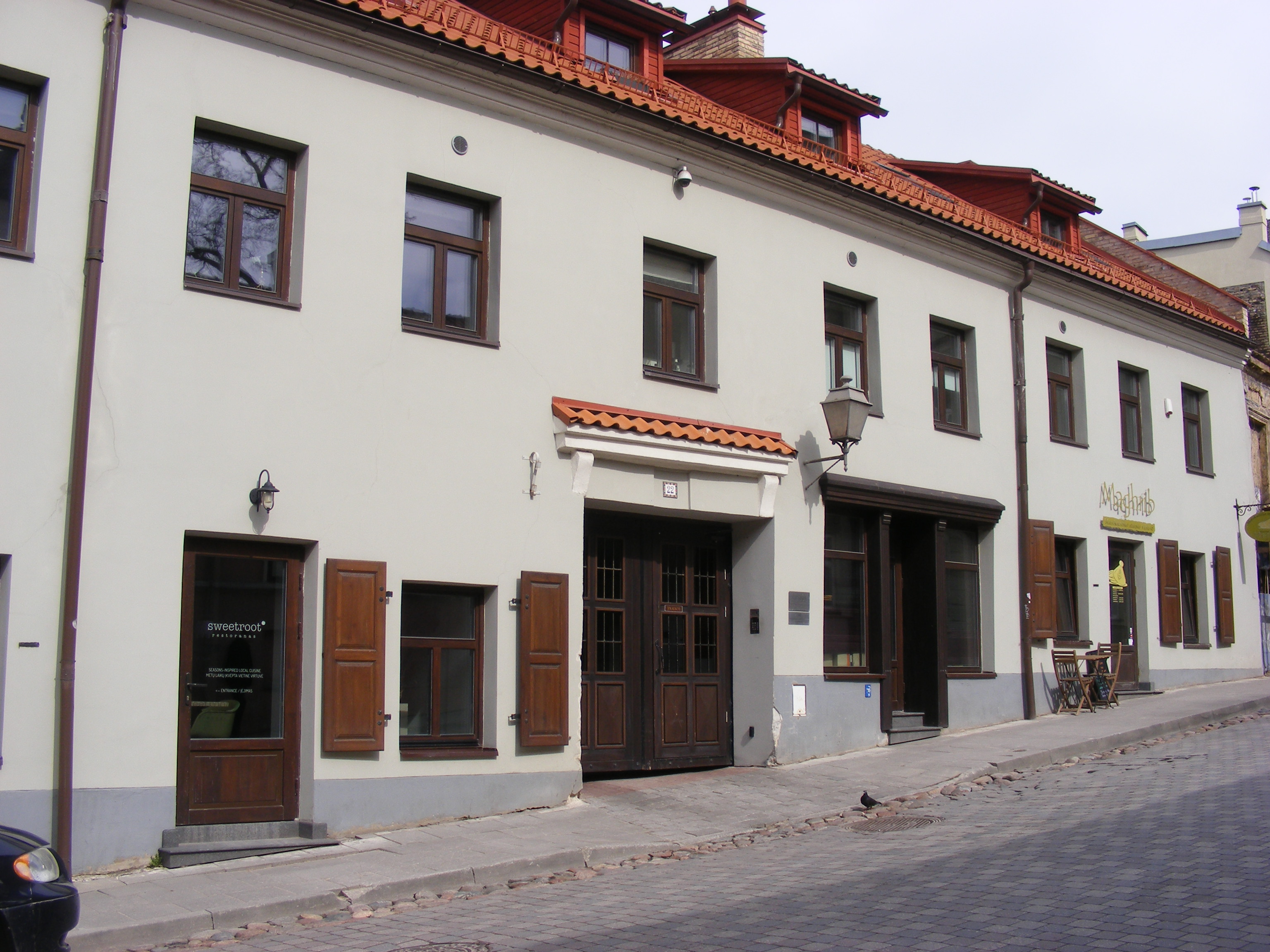 Užupio street is the main street in the city’s district of Užupis. The district was in the Soviet time one of the most dilapidated districts in Vilnius. Many of the buildings did not have electricity and sanitary facilities, and the streets were unlit
Užupio street is the main street in the city’s district of Užupis. The district was in the Soviet time one of the most dilapidated districts in Vilnius. Many of the buildings did not have electricity and sanitary facilities, and the streets were unlit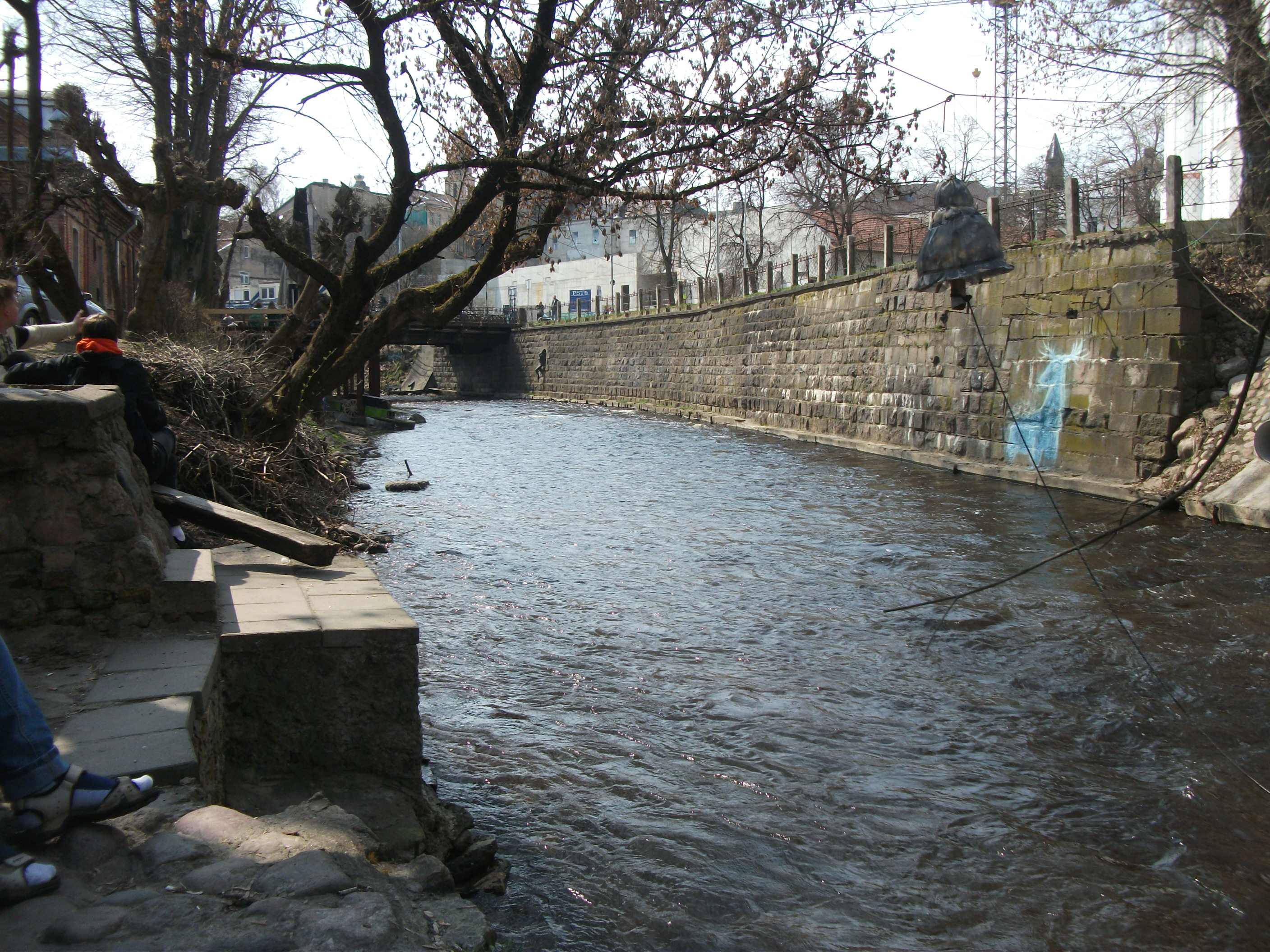 The River Užupis which separates Užupis district from the Old Town. On one side of the river is a unique ensemble of sacred buildings and a park, while on the other side is “Republic of Užupis”, where a number of artists live and work
The River Užupis which separates Užupis district from the Old Town. On one side of the river is a unique ensemble of sacred buildings and a park, while on the other side is “Republic of Užupis”, where a number of artists live and work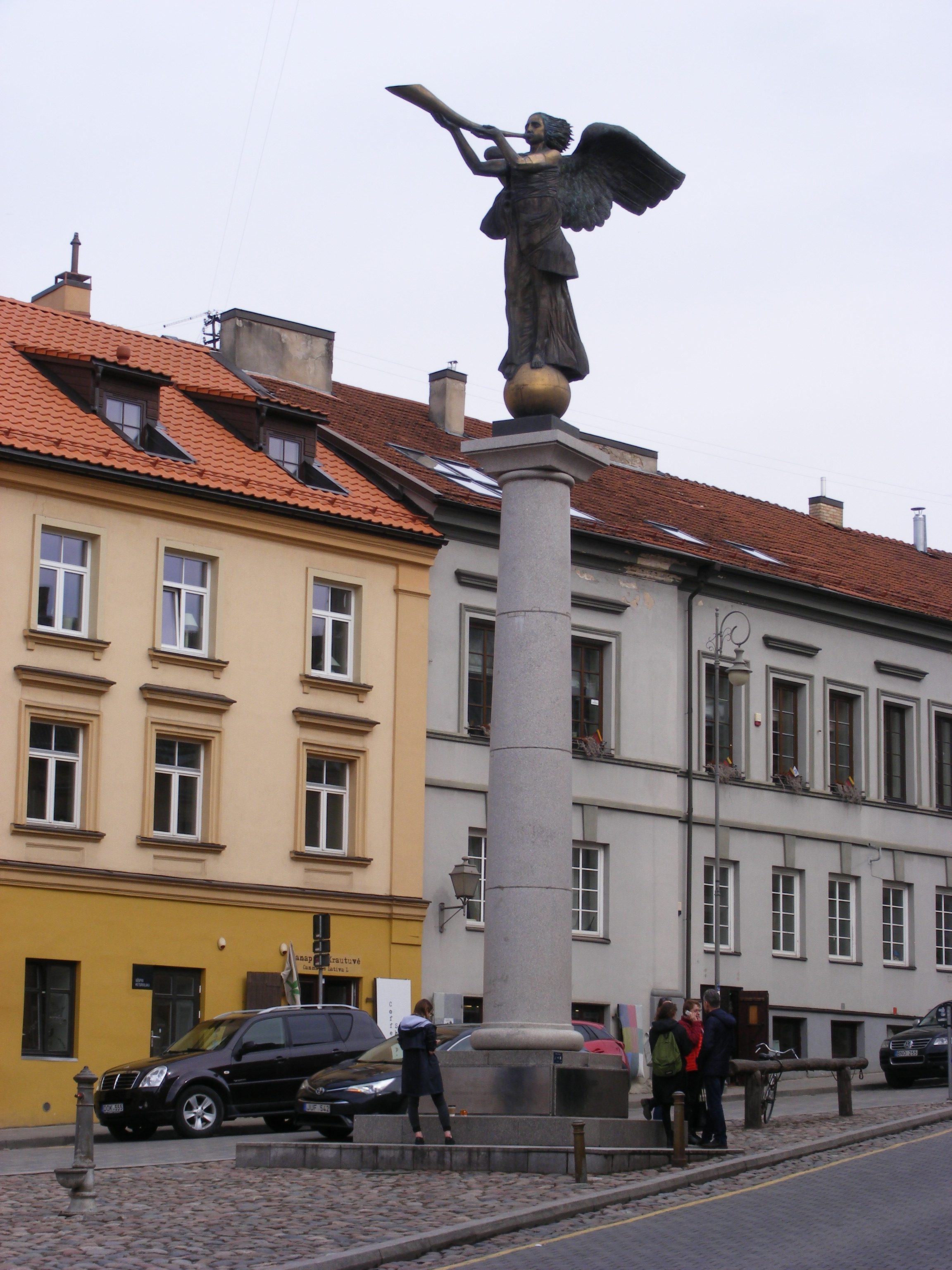 “Angel of Užupis” sculpture. An angel is playing a trumpet that provides ideas about Užupis to others and protects the district. The 24th Article of the Constitution of Užupis, for instance, says that “Everyone has the right to understand nothing”. The district is separated from the Old Town by the River Vilnia on three sides, and by a high hill on the fourth side
“Angel of Užupis” sculpture. An angel is playing a trumpet that provides ideas about Užupis to others and protects the district. The 24th Article of the Constitution of Užupis, for instance, says that “Everyone has the right to understand nothing”. The district is separated from the Old Town by the River Vilnia on three sides, and by a high hill on the fourth side




















